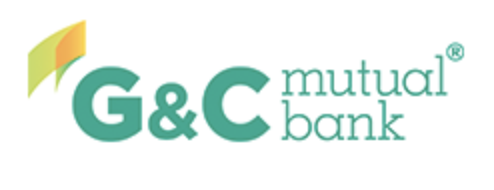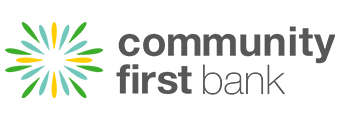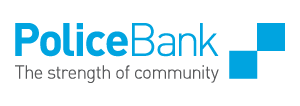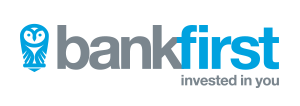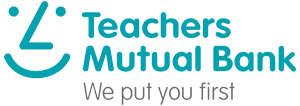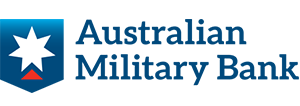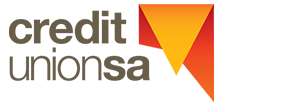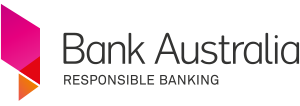What is a credit card?
A credit card is a plastic card – and increasingly a digital card on your smartphone – issued to clients by banks and financial institutions. It is used to make purchases when you don’t have cash on you or money in a transaction account. Your credit card will have a pre-approved amount of funds available to you for use for all sorts of purchases and payments such as groceries, bills and online purchases.
Each physical credit card has a security chip, card number, magnetic stripe, ultraviolet features, and a three-digit CVV/CVC code:
- Security chip. New credit cards come with an in-built security chip. These chips make it harder for criminals to access your details.
- Account holder name. Your name is embossed on the front of your card and is used to verify who you are.
- Card number. Your card number is also embossed on the front of the card. Each card has its own set of unique numbers that are used to process all credit card transactions.
- Magnetic stripe (Magstripe). This is used when swiping your card to make purchases. It contains encoded information detailing the cardholder’s account including their credit card number, full name, the card’s expiration date and the country code.
- Ultraviolet feature. This is an anti-fraud feature that helps people identify the card as genuine.
- 3-Digit CVV/CVC Code. The three-digit code is your card’s security code or Card Verification Value. It is used when making payment over the phone or via internet. It is located on the back of your credit card. It is used for VISA and MasterCard branded credit and debit cards. An American Express branded credit or debit card has a 4 digit numeric code.
How does a credit card work?
A credit card is essentially a line of credit where you use the institution’s money to make purchases and repay that money at the end of your billing cycle. A statement is sent out each billing period (typically 55 days) so you now how much you need to repay. If you don’t repay the full amount by your statement due date, you will need to pay interest on the unpaid balance.
When you first applied, the bank would have estimated how much you should be able to pay back and therefore assigned a credit limit for you. This is the maximum amount of money you are able to spend. If you repay what you have spent each month, you can then access that entire amount again the next time you need to make a purchase.
When do I get my credit card?
Once you have been approved, your credit card will be sent out to you via mail and you should receive it within 5-7 business days. You might also be able to set up a digital credit card via your smartphone wallet – Apple or Google Pay – near-instantly.
Once you have received your card, you will need to follow the activation instructions. It is usually a case of accessing your internet banking online or via the banking app and following the instructions. You will be asked to set a PIN (Personal Identification Number) and sign the back of your card. Once that is done and you have activated the card, you are ready to make purchases.
How credit card interest works
If you don’t repay your balance in full each month, you will be charged interest on the amount you didn’t pay off. The interest rate is usually between 9.99% and 21% p.a. (per annum) depending on the card and lender. Any transaction considered to be a cash advance (for example ATM withdrawal) will accrue interest at the cash advance rate of up to around 22% p.a.
Your statement will arrive each billing period and outline all your charges. It will also have a minimum amount required for payment which is typically 2-3% of your balance. If you pay your entire balance in full, you can usually take advantage of up to 55 interest-free days on your purchases in the next statement period. If you forget to make your minimum monthly repayment, you may be charged with a late fee.
Basic information about credit card
Credit cards vs. debit cards
The basic difference between the two types of cards is that with a credit card, you are purchasing things with money that belongs to the bank: you then need to repay it. When you purchase goods and services using a debit card, you are using your own money therefore you don’t need to repay it. Debit cards are usually solely the realm of banks, as you are using your money, while credit cards can be offered by non-bank lenders such as Latitude Finance.
Visa vs Mastercard
There are many similarities between the two, and the end consumer might not notice a difference at all. In simple terms they are digital payment platforms that provide the system that allows a transaction to take occur. Both are accepted worldwide. Interestingly, banks issue credit cards, not Visa or Mastercard. They have nothing to do with how much interest is charged or what types of points program or fees you will need to pay.
Security
Credit cards offer great security with their zero liability policies. Therefore, you will not be held accountable if a fraudulent charge is made on your account.
Using a credit card at the ATM
Even though you are able to withdraw cash from your credit card, you need to be aware of the charges that go along with it. You will be charged a cash advance fee and will not have an interest free period to repay the cash withdrawal: the interest will be higher on your repayments for the cash advance. This is because it is technically not your money and is a loan.
Promotions
There are three types of promotions you can find when searching for a credit card. Interest free, balance transfer and bonus points.
Interest free promotions are great for those who struggle to make full repayments each month. Interest free periods are usually between 6-12 months and mean the repayments you make in that time go 100% into reducing your balance.
Balance transfer promotions let you transfer your existing balance to a new credit card and repay it at a lower rate. This type of promotion is useful for those of you who have a credit balance in which you can’t seem to conquer. Switching to a balance transfer card will give you the opportunity to make payments with very low interest (and sometimes with no interest at all), so you can chip away at the balance you have owing. These cards have a promotional period and as soon as that period is up, your rate will revert to the current interest rate.
Bonus point promotions are of great benefit to cardholders who have frequent flyer accounts or like earning rewards points. With these cards you receive bonus points for each purchase you make with that card.
What features do credit cards come with?
Your credit card will come with a range of features, depending on the type of card you apply for. The following is a list of features to be aware of, noting that not all features apply to all credit cards.
1. Credit limit
Your credit card limit is the maximum amount of money the bank has approved for your use on your card.
2. Interest-free days
If you pay your balance in full by the statement due date, you will receive up to a number of interest-free days on purchases in the next statement period. Up to 55 days is the typical interest-free period. This doesn’t apply to cash advances such as ATM withdrawals.
3. Cash advances
You can use your credit card to get cash from an ATM, for gambling purchases and paying bills but these are all considered cash advance transactions. These attract higher than normal interest rates, usually around 22%.
4. Rewards programs
You can sign up for a rewards program which earns you points for each dollar you spend at certain places. These reward points can be used towards purchases, entertainment and even holidays. However, these cards often come with higher annual fees and purchase rates.
5. Contactless payments
Contactless payment is great for purchases under $100. You can tap your credit card or mobile-pay compatible device against a contactless reader to make payment. You won’t be required to punch in your pin if the withdrawal amount is under $100.
6. Digital cards
Many banks and lenders nowadays allow you to activate a digital card near-instantly before the physical card arrives in the mail. This can usually be done through the institution’s app, and you can then add these cards to your digital wallet such as Apple Pay or Google Pay. This then allows you to make purchases with your smartphone.
7. Insurance covers
Some forms of complimentary insurance are included with most platinum and black-tier cards. This can include things such as travel insurance and purchase protection insurance just to name a few. To see what’s included with each insurance policy you can read the product disclosure statement (PDS). Note that an insurer’s retail policy might differ to what’s offered with a credit card.
Who provides Australia’s credit cards?
There is certainly no shortage of credit card providers in Australia. The following list is a comprehensive guide as to who you can apply to acquire a credit card:
How do credit card purchases work?
When you receive your credit card, it will arrive with a predetermined approved amount.
The first thing you need to do when it arrives is to activate your card so it is ready to use. You can then make purchases in store, online and over the phone.
You can also use your credit card to make cash advances from ATMs, however be aware that these types of transactions attract a higher interest rate than your normal grocery or product purchases.
Each billing period, you are required to make a minimum monthly repayment. These repayments are calculated based on the balance owed and the interest rate.
Failure to make a monthly payment could result in a late payment fee.
The advantages and disadvantages of credit cards
Advantages
1. Convenience
Credit cards make life easier for all types of shopping scenarios, whether it be in-store or online and can be used whilst travelling overseas. Protection is a fundamental attribute. Credit cards come with fraud protection and multiple layers of security, so even if your credit details are stolen, your money remains safe. You can funnel regular purchases through the credit card and pay them off in one fell swoop, synching up with your pay cycle and potentially making budgeting easier.
2. Flexibility
A credit card gives you immediate access to money for purchases when you may not have enough in savings. You can then pay it back with smaller pre-determined monthly instalments or in one go if you prefer.
3. Rewards
Lenders offer credit card rewards where you earn points in accordance with how much you spend on your credit card. The more you spend, the more points you can accumulate. These points can be used towards many different things such as purchases, experiences and even travel. Just make sure the rewards you earn are worth it. There’s no point in having rewards points if the cost of any interest and annual fees surpass the amount you are gaining in points.
Disadvantages
1. Debt
It’s very easy to fall into the credit card trap and find you owe a lot of money, without the means to repay it. Apart from the purchase price, you also need to repay any interest that applies, making your repayments higher than what your initial purchase cost was. If you do not repay your balance in-full within each billing period, interest costs can be high – sometimes 20% p.a. or higher.
2. Cost of borrowing
Credit cards are expensive in comparison to some other loan products. The average interest rate for an Australian credit card is about 17% p.a. whilst personal loans are closer to 7% p.a.
3. Surcharges
Some businesses charge a 1% to 2% surcharge on credit card payments to cover the cost of processing. Some credit card providers – such as American Express – charge a higher merchant fee, which makes the cost of doing business for the retailer more expensive.
Different types of credit card interest
There are a few different types of interest rates and it’s important to understand which interest you will pay when making purchases with your credit card.
1. Purchase rate
When making purchases using your credit card, you will be charged the purchase rate. This rate applies to any purchase balance that is unpaid at the end of the billing cycle. It does not apply to other interest charges incurred.
2. Cash advance rate
This interest rate is charged when you withdraw cash from your credit card, purchase foreign currency or perform international money transfers. A cash advance isn’t just withdrawing money from an ATM. It is also when you transfer money from your credit card account to a transaction account via online banking. It also includes any cash equivalent transactions such as money orders. The interest rate for cash advances is usually higher than your typical interest rate.
3. Promotional or introductory rate
An introductory interest rate is usually a lower rate and is applied to balance transfers and purchases made on your new credit card for a limited amount of time. Once this promotional period expires, the interest rate usually reverts back to a higher rate.
4. Balance transfer rate
This is the interest rate usually offered when you transfer your balance to a new card for the purposes of consolidating debt. The rate is usually considerably lower than the one you are leaving, sometimes even 0%.
Choosing the right credit card for you
Before starting your credit card research and comparison, you should determine what your financial situation is and what future goals you may have:
- Current financial circumstances: This is the most important aspect in determining if you should even get a credit card. If you were to make a large purchase on a card, how much could you afford to repay per month? Knowing the answer to this question will help you decide what type of limit you should apply for.
- What features do you need? There are many types of features available with different products. Features can include no annual fee, low interest rates, long interest-free periods, availability of rewards or frequent flyer points, balance transfer offer and eligibility criteria such as lower income requirements.
You may find that a credit card with less features, will give you a better interest rate. Always weigh up what features you most need and then determine if it is worth paying the extra money for those features.
Glossary of Terms
| Annual fee | The fee credit card providers charge credit card holders on an annual basis for the use of the credit card. |
|---|---|
| Balance transfer | When a card holder transfers the outstanding credit card balance to another card, usually with a better rate. |
| Balance-transfer fee | The fee charged to make a balance transfer (flat fee or percentage depending on the institution). |
| Cash advance | Withdrawal from a line of credit. Interest usually starts accruing right away, instead of after your interest-free period like with your usual credit limit. |
| Cash-advance fee | The fee (flat rate or percentage) charged against a cash advance, usually on top of a higher interest rate. |
| Credit limit | The predetermined, maximum limit (maximum amount you can spend) of your card set by your institution. |
| Credit report/history | A history of your loan and bill payments. This information is kept by a credit bureau and used by financial institutions to determine your ability to pay debt. |
| Credit score/rating | Your credit record and history is scored by a number that determines whether you are credit friendly. The takes into account ability to pay bills on time, current level of debt and types of credit and loans. A good credit score is 700 or above. |
| Creditor | The institution in which you owe money. |
| Default | When you fail to make any payments on your debt within a designated time period. Defaults will damage your credit rating. |
| EFTPOS | Electronic Funds Transfer at Point Of Sale. Merchants use EFTPOS to charge customers. |
| Full balance | What you spend on your card each month. |
| Interchange fee | Fees paid between banks for the acceptance of card-based transactions. |
| Interest rate | Interest rates are applied when a card holder fails to pay an outstanding balance within the interest-free period. Credit card interest rates are generally higher than those of other loan types. |
| Interest-free days | Card holders have a number of set days (typically 55 days but sometimes longer or shorter) before interest rates are applied to their purchases. Not applicable to cash advances. |
| Introductory rate | A low interest rate charged when you first acquire your credit card. The rate reverts to standard high rates after a predetermined period. |
| Minimum payment | The minimum amount of money you can use to pay off your outstanding monthly balance. Failure to meet the minimum repayment usually results in extra fees charged. |
| Over-Limit Fee | The penalty you incur for exceeding your credit limit. |
| Penalty fees | If you violate the terms of your cardholder agreement, you will be charged a penalty fee. The apply if you make a late payment or exceed your credit limit. |
| Rewards program | The benefits offered by a credit card provider, usually based on the proportion of money spent on the card. Rewards include cash back, shopping vouchers, frequent flyer points, and so on. |


